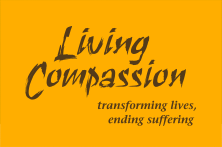All know the way; few actually walk it.
— Bodhidharma
While Zen Master Dogen was training at a monastery in China, he came across an old monk drying mushrooms in the hot sun. It was backbreaking work, and aghast that it had been left to a senior practitioner, the concerned Dogen stopped and respectfully enquired whether a younger novice could take over the task. The monk’s sharp response was, “Other people are not me.” Taken aback, but still concerned, Dogen persisted, suggesting that the old monk could rest for some time and resume the task later. The old monk replied, “If not now, when?” Dogen supposedly retreated from this interaction chastened, but on later reflection understood the profound teaching he had been offered: "If not now, when? If not here, where?”
The old monk is a living example of a phrase we often use in this practice, “Every Moment Zen.” The intersection of here/now is the only moment, and to be here, now, is the entirety of Zen practice. In essence, as practitioners all we’re ever practicing is being here, now, for this.
But a phrase such as “here, now, for this” is only an intellectual understanding if it isn’t embodied in example. Presence isn’t an abstraction. So how does one teach the essence of Zen practice? Only by example!
There are many Zen stories of teachers whose lives were an actualization of their practice. From Zen Flesh, Zen Bones:
Hyakujo, the Chinese Zen master, used to labor with his pupils even at the age of eighty, trimming the gardens, cleaning the grounds, and pruning the trees.
The pupils felt sorry to see the old teacher working so hard, but they knew he would not listen to their advice to stop, so they hid away his tools.
That day the master did not eat. The next day he did not eat, nor the next. “He may be angry because we have hidden his tools,” the pupils surmised. “We had better put them back.”
The day they did, the teacher worked and ate the same as before. In the evening he instructed them: “No work, no food.”
There is so much we can take away from this story.
First, all Zen teachings are koans. If we fail to absorb this principle, we’re unlikely to stay in the practice of inquiry long enough for the koan to reveal its secret. If we don’t learn early in practice that Zen teachers may use a conventional phrase but it is simply “a finger pointing at the moon,” we may miss the subtle layers of teaching hidden behind “No work, no food.” For example:
- If one doesn’t practice, one doesn’t reap the results of a practice. Or as we would say it, "the process is the outcome.”
- There is no such thing as retiring from practice.
- All of life is practice. In a non-separate reality, the activity of daily life (trimming, pruning, cleaning, teaching) isn’t other than practice.
- In a non-dualistic orientation, is there a difference between a student and a teacher?
- No one can do our work. We must take responsibility for working out our own salvation.
- We can’t do anyone else’s work! Therefore, we never interfere with another’s practice.
- We are always bringing conscious awareness to our process. What, other than conditioned mind, projects that old age inevitably leads to a diminished capacity for wholehearted participation in life?
- We take every opportunity to question conditioning. Ego hides behind even a caring impulse.
- Living the teachings is truly the best way to be helpful.
- Add your own.
And we can “add our own” because we have a living example of a Zen teacher who has taught us the way, not because we have done koan practice with Zen stories from the past.
As we celebrate another International Day of No Self-Hate, let’s pause and make Gasshō to the Guide, the student and the teacher, whose life and practice have guided us over the years. What a rare privilege to train to find Unconditional Love, not with a story but with a living example, with Emptiness in Form.
Blessed is the knowledge of Emptiness.
Here’s to many more years of working alongside the Guide. We know not to hide any tools!
In gasshō
ashwini
